Level crossings for horse riders
How to use level crossings safely as a horse rider
As riders we need to:
- Follow signs and instructions to dismount; to stop, look and listen; and to use the phone.
- Check both ways before crossing – if there is a train coming, don’t cross.
- Understand the warnings (lights, barriers, alarms). Download level crossings for horse riders(pdf) or view the guide below.
- Wait until all the warnings stop.
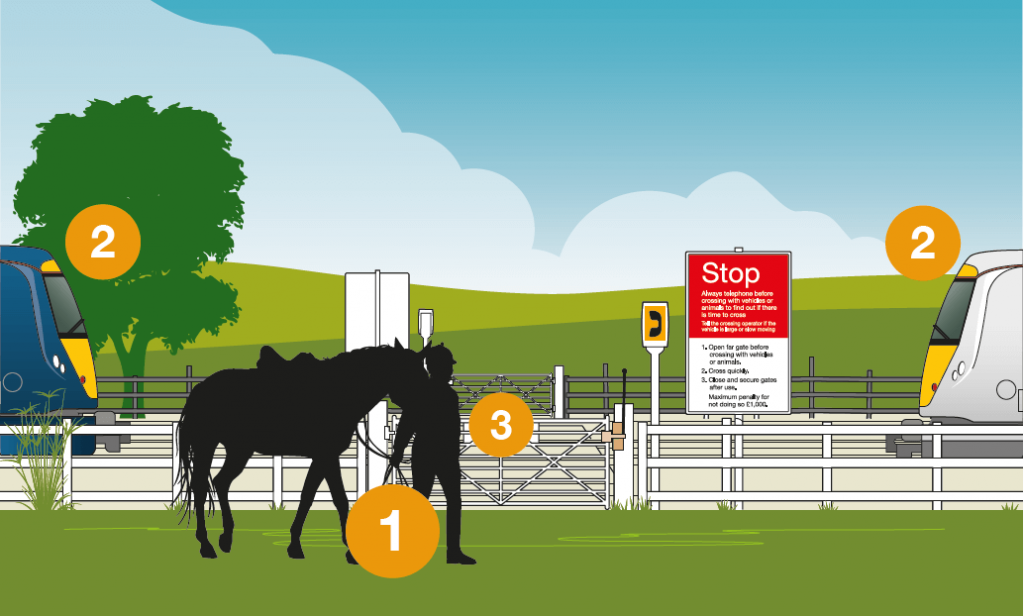
We also need to understand the potential dangers:
1. HEIGHT
Overhead lines are electrified. Be mindful of your increased height, including the reach of your whip. Dismount when instructed to do so.
2. ASSUMPTION
Don’t assume there is only one train or use previous experience to guess when the train is coming. Trains can come from either direction at any time. When instructed, use the telephone to find out whether you have time to cross.
3. OPEN GATES
It’s surprisingly easy to forget to close a gate. We must close both gates after using the crossing.
4. REACTION
How will your horse react to flashing lights, alarms or other sudden noises?
Understanding the safety systems used at level crossings
Level crossings enable us to cross the railway safely. Each is unique with differences in how often trains run, and the local geography. It’s particularly useful to understand the safety systems used at crossings:
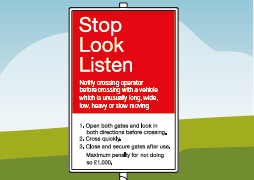
Stop, look, listen sign
- This sign indicates that we need to be extra vigilant – the crossing may not have a visual or audible warning.
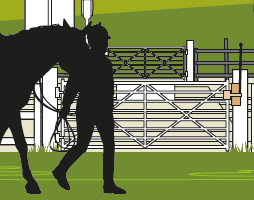
Gates
- We may need to open the gates ourselves although some are operated by railway staff.
- We must make sure that there is no train coming before and immediately after opening the gates.
- We must make sure that all gates are closed after using a crossing.
- If we are crossing in a group we must make sure there is enough time and space for everyone to cross safely.
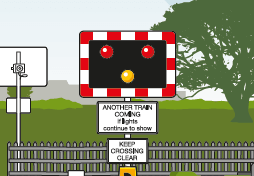
Warning lights
- Some crossings have amber and red warning lights. We must stop as soon as the lights come on, whether they are amber or red and not cross until the lights stop flashing – there may be more than one train.
- Some crossings have red and green lights. We must only cross when the green lights are showing.
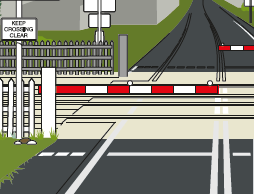
Barriers
- Warning lightsSome crossings are ‘open’ and don’t have barriers, some have a ‘full barrier’ which blocks the entire road, whilst others have a ‘half barrier.’
- We must not cross until the barriers are fully raised – there may be more than one train.
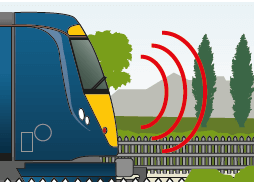
Alarms and sirens
- There are various types of alarms – some sound like sirens, some sound like train horns.
- We must not cross if we hear a warning sound or message. This is the opposite of a pelican crossing, where the sound indicates that it is safe to cross.
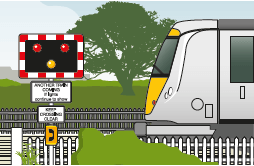
How long until the train actually arrives?
- As users, we can never be sure! There is no set amount of time from a warning activating to the train arriving and there may be more than one train.